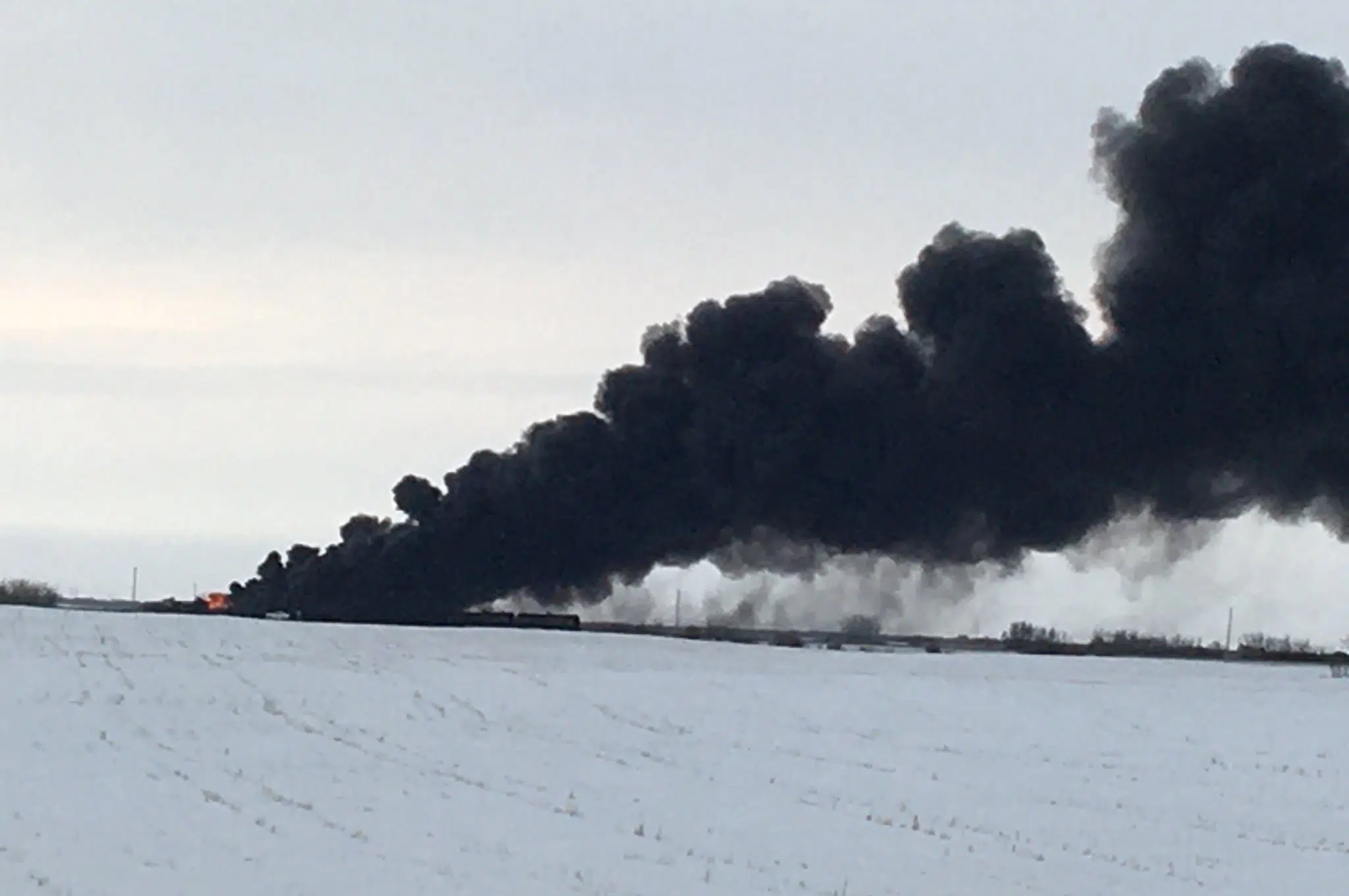After dealing with two derailments over the span of two months, residents in Guernsey are on edge when a train rolls through town.
They don’t have any answers as to why two separate trains derailed in December and February — the first west of town, the second east. A completed investigation report from the Transportation Safety Board (TSB) could take up to 600 days to make it to the public eye.
650 CKOM collected questions from the residents of Guernsey and posed them to agencies involved in the investigation, as well as to Garland Chow, a rail safety expert and business professor at the University of British Columbia.
Chow does not have direct knowledge of the Guernsey derailment investigation, but answered questions on a general basis of what could lead to a train coming off the tracks.
Brian Prentice: “Somebody has to answer. Is it the track? A lack of maintenance? Is it the cars?”
What officials have said so far only paints part of the picture.
TSB’s investigation pages for both derailments indicate that no “causal” mechanical issues were found on either train, and reviews of the locomotive event recorders suggest both trains were being handled according to regulations and CP Rail policies.
Transport Canada confirmed three inspections were completed in the last year on the rail line surrounding Guernsey, located 115 kilometres southeast of Saskatoon.
The first two inspections, done on May 7, 2019 and Aug. 27, 2019, found “minor non-compliances” but repairs were made within 30 days by CP Rail.
The third inspection, completed on Jan. 29 of this year — just eight days before a second train derailed along the line — didn’t find any instances of non-compliance.
Chow told 650 CKOM that if mechanical and engineer error are ruled out, that leaves very few other possibilities.
“It probably has to do with equipment, and the No. 1 factor that affects that is a breakdown of the rail,” he said.
Ken Koch: “Are the welded tracks the problem?”
Chow: “The rail could have a broken weld someplace. It could be cracked. It could be bowed; in other words, it’s not flat against the ballast and the ties on the track. All those things can then result in the separation of the train’s metal wheels from the track.”
Don Koch: “Does it have an effect on the track when (the temperature) is 20 below or 30 below?”
Chow: “(Rail breakdown issues) are made worse in the cold, particularly if it’s a winter when you have alternating cold and warm. Then you’re going to have water freezing and not freezing, and that just shifts things around.”
Vickie Miller: “(Could) some of the problem be with the potash mines?”
Nutrien’s Lanigan potash mine is located approximately three kilometres away from the site of the Feb. 6 derailment, but there hasn’t been any indication from officials the mine has had an impact on rail conditions.
Chow: “If they’re mining something … near the tracks or perhaps underneath them, that’s going to reduce the stability of the ground underneath. Now, generally what railroads do is they check the ground to make sure that it’s stable. If there’s any possibility it will shift, they do remediation on it.”
Miller: “Should we be putting the oil in pipelines?”
Chow: “It’s safer because they have what is called SCADA (Supervisory Control and Data Acquisition). It’s a type of control system that senses what is happening along the pipeline continuously, 24 hours a day. The way they do that is they measure the pressure that’s in the pipeline. Once you sense the pressure is suddenly decreased, that means there’s a leak — and so they can respond to that very quickly.
“The problem with rail is … you need to continually check it. You normally have maintenance where people manually will be looking at the rails and checking it to see if there’s any problems and remediating it. But you can imagine in the winter, you have more difficulty — particularly if there’s snow on the rails. There are studies that indicate the number of accidents that occur because of rail failure increase in the winter time, and this is a Western Canadian study.”







